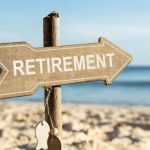All humans have a built-in “alarm system” that goes off when they feel threatened. This alarm starts chemical, physical and emotional changes that prepare us to either flee or fight the danger that triggered the alarm (“Flight or Fight Response). In some people, this alarm may go off unexpectedly, creating a very strong sense of threat when no danger is present. This “false alarm” is called a panic attack. It occurs in a condition known as panic disorder.
What is a panic attack?
A panic attack is a terrifying experience. Several physical and emotional signs occur during a panic attack. The most common signs are a racing heart, shortness of breath, faintness, hot or cold flushes, trembling, tingling, weakness and nausea, or feeling as though one's self or the external world has changed somehow. In addition, people with panic attack may fear that they are dying, or going crazy or are about to lose control. Some panic attacks come on very quickly and involve many intense feelings. Other attacks may be less intense and involve fewer feelings. The signs of panic attacks can change or stay the same from one attack to another.
A panic attack sounds like a heart attack. Is it?
No. The symptoms of panic attacks can seem like those of other serious medical events, like heart attacks and strokes. This makes panic attacks hard to recognize. Many people who go to the Emergency Room for these symptoms, and are found not to have heart disease, turn out to have Panic Disorder.
In addition, panic-like symptoms can be produced by other medical problems (like respiratory and thyroid diseases). If you or your doctor think you may have panic disorder, you will need to be checked carefully to rule out other problems.
What is agoraphobia?
Panic attacks can be so frightening that some people begin to change their behavior because they're afraid of having an attack. They may avoid certain activities, like exercise, that they think might cause an attack. They may avoid activities (shopping) or places (like bridges) where escape isn't easy if a panic attack occurs.
Some people may be unable to do routine activities without the company of a “safe person.” This pattern of fear and avoidance is called agoraphobia (say: uh-gor-uh-fo-bee-uh). The word “agora” means a market or meeting place, and “phobia” means fear. Although agoraphobia is often understood as a fear of open places, it also involves fear and avoidance of many activities and circumstances
Why do panic attacks keep happening?
Once panic disorder develops, it usually becomes a daily cycle of fear. The cycle begins with advance anxiety about where, when and how the next panic attack may occur.
People with panic disorder often become aware of and worried about physical changes that might happen. This buildup of fear and anxiety (“anticipatory anxiety) often leads to greater fear in the situation, a higher likelihood of actually having a panic attack and, for some people, a reason to avoid the situation entirely. People who have panic disorder with agoraphobia may spend a lot of time avoiding activities and places they fear might trigger a panic attack.
Do many people have panic disorder?
Yes. Research has shown that many people have at least one panic attack in their lives. Three out of every 100 people will develop panic disorder. Of those who seek treatment of panic disorder, about two thirds have also developed some degree of agoraphobia.
Panic attacks can be hidden, even from doctors. People often worry about what others think. They fear that this strange experience is something that doesn't happen to other people.
Panic disorder usually begins in the late teens through the mid-thirties, but can also occur in children and older adults. Two thirds of patients with panic disorder are women. The tendency to have panic attacks seems to run in families.
What else should I know about panic disorder?
As in any disease, people with panic disorder may have complications. Some people think of themselves as weak or defective because they have panic attacks. The strain that panic disorder puts on families can cause marital and family problems.
In addition, about one third of people with panic disorder also have depression or problems with drugs or alcohol use. If you have panic disorder or agoraphobia, a complete physical exam is the first step. You can talk with your doctor about your panic attacks and other problems.
Is there a treatment for panic disorder?
Yes! Although panic disorder can feel terrible, it can be treated. You can take medicine or have a special type of cognitive therapy, discussed below.
Several medicines can help control panic attacks. Some medicines may be used for only a few weeks. Other medicines may be used for a year or longer.
Certain therapies, called cognitive and cognitive-behavioral therapies, have been found to be effective in treating panic disorder. These therapies include education about panic disorder, learning personal coping skills to manage and change fearful thinking and anxious feelings, and gradually going back into feared or avoided situations (this technique is called “exposure”). These treatments can be done by yourself, or with a partner or a group.
Therapy can also help cut the risk of relapse (having the panic attacks start again). If you get treated with medicine alone, you might start having panic attacks again when you stop taking the medicine. About 80 to 90% of people who have cognitive behavioral therapy are helped, even if they don't take medicine.
Talk with your family doctor if you think that you might have panic disorder with or without agoraphobia. Your doctor can help you decide on the best treatment approach for you.






